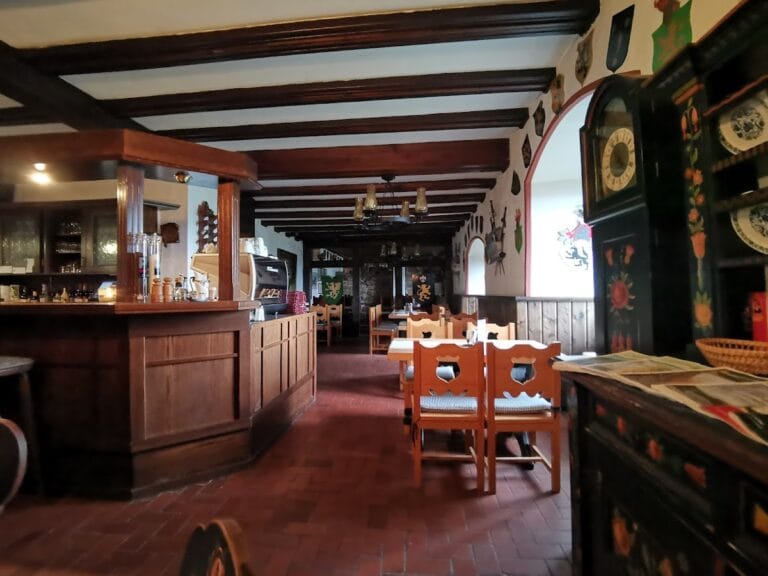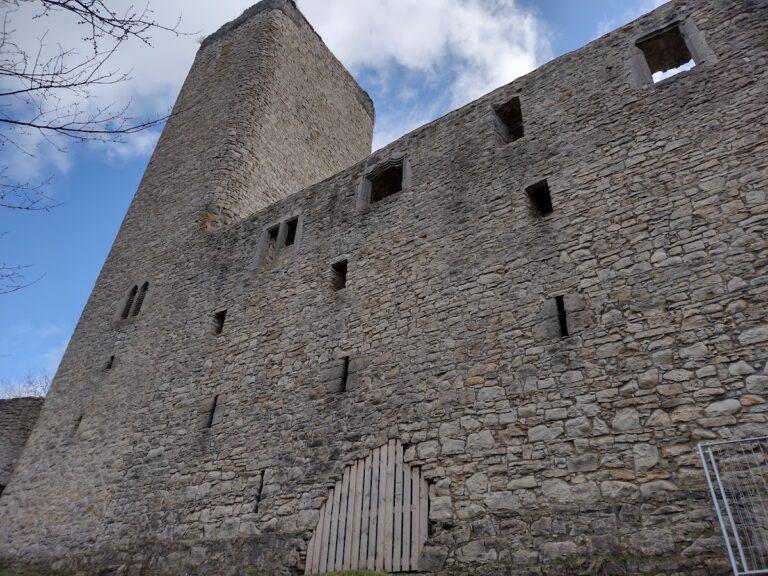Ranis Castle: A Historic Hilltop Fortress in Germany
Visitor Information
Google Rating: 4.5
Popularity: Low
Google Maps: View on Google Maps
Official Website: www.museum-ranis.de
Country: Germany
Civilization: Medieval European
Remains: Military
History
Ranis Castle is situated in the municipality of Ranis in Germany. It was constructed by German imperial authorities and nobility, with its earliest recorded existence dating to the 11th century.
The first known mention of Ranis Castle appears in 1084, when Emperor Henry IV granted ownership to Wiprecht of Groitzsch, formally enfeoffing him with the fortress known as castrum Ranis. During the 12th and 13th centuries, the castle served as a residence for imperial ministeriales, which were officials or knights appointed directly under the king’s authority. At this time, Ranis also functioned as an imperial estate, or Reichsgut, acting as a defensive stronghold on the eastern frontier against Slavic groups in the Saalegau region.
Throughout the late medieval period, control of the castle changed hands among several noble families. Emperor Otto IV pledged Ranis to the counts of Schwarzburg, who were officially enfeoffed with it by Emperor Frederick II in 1220. In the centuries that followed, ownership alternated between the counts of Kevernburg and Schwarzburg. By 1389, the Schwarzburg family sold the castle to the House of Wettin, a significant noble dynasty in the region.
In the mid-15th century, specifically 1463, the castle was willed by Wilhelm III to his brother-in-law Heinrich von Brandenstein, the sibling of his wife Katharina von Brandenstein. Due to financial difficulties, the Brandenstein family later sold Ranis in 1571 to the lords of Breitenbauch, who subsequently adopted the name Breitenbuch.
The surrounding town of Ranis and the district of Ziegenrück were incorporated into Prussia in 1815. Despite political changes, the castle remained in the possession of the Breitenbuch family until 1942, when it was transferred to the German Red Cross. Since 1994, stewardship of Ranis Castle has been under the Stiftung Thüringer Schlösser und Gärten, the Thuringian Castles and Gardens Foundation, which has overseen significant preservation and restoration efforts.
In the 20th century, the site gained additional cultural roles. A museum focused on the castle’s heritage and the region’s geology, prehistory, and seismology was established in 1926 by Dietrich von Breitenbuch. The museum later reopened as a local history venue in 1956 under the town’s administration. Despite periods of financial insecurity that led to its inclusion on a national list of threatened cultural sites, the museum received state support in the 2010s to maintain and modernize its exhibitions. The castle grounds also hosted an annual literary festival starting in 1997, and served as a filming location for a 2010 family movie.
Remains
Ranis Castle is built as a hilltop fortress, known in German as a Höhenburg, perched on a distinctive Zechstein reef rock formation 405 meters above sea level. The complex centers on a compact main castle, or Hauptburg, positioned on the western side of the site, which encloses a small inner courtyard. A defining feature of this core is its tall round bergfried, a type of fortified tower or keep, rising approximately 38 meters high. This tower serves as a prominent landmark and symbol of the castle’s medieval defensive function.
Adjacent to the main castle is a south wing constructed in the early 17th century. This wing reflects the late Saxon Renaissance style, with characteristic gabled dormers adding a more residential and representative aspect to the formerly military stronghold. The construction of this wing marked a transformation from a fortress to a palatial residence.
To the east of the main castle lie two extensive outer baileys, or Vorburgen. These enclosed courtyards once contained the castle’s ancillary buildings and economic functions. Between the larger eastern courtyard and the outer bailey stands a preserved building that served as a dividing structure within the complex. The outer bailey area also features a vaulted tunnel passing beneath it, leading down to the old town below the castle.
Defensive designs include a zwinger, an enclosed killing ground located on the eastern side, protected by an outer moat and accessed via a drawbridge. These fortifications highlight the castle’s role in active defense during medieval conflicts. The majority of the standing architectural elements date back to the 13th and 14th centuries, with the Renaissance updates added during the early 1600s.
Beneath the castle’s outer bailey is the Ilsen cave, a notable natural chamber formed within the Zechstein reef rock. This cave has been integrated into the cultural narrative of the castle and is included in museum presentations concerning regional geology and prehistory.
Of particular interest is the historical presence of a bear enclosure, or Bärenzwinger, that existed around 1940 within the castle grounds, reflecting a tradition at some medieval sites of keeping live animals for display or symbolic purposes.
Today, Ranis Castle is carefully preserved and managed as a historic site with functioning museum spaces that interpret both its architectural legacy and the natural features intrinsic to its location.










